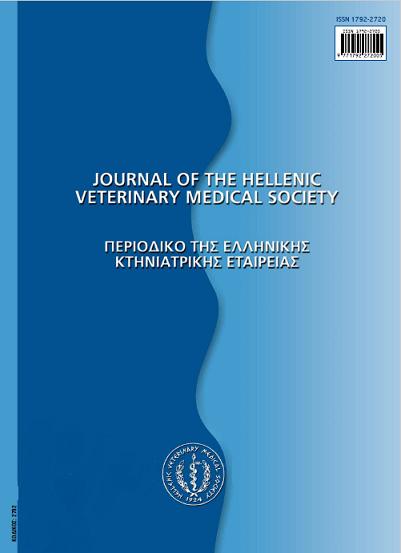Managing the transition period of dairy cows to prevent major metabolic postpartum disorders
Abstract
The transition period refers to the time between 3-4 weeks prior to and 4 weeks after calving. This is the period with the highest incidence of metabolic and other periparturient disorders. Many of these disorders interrelated and often coincide. Proper management and nutrition of the transition cow are critical for obtaining maximum dry matter intake, good health, increased reproductive efficiency and optimum milk production in the following lactation. The present review is comprised from two parts. In the first one, selected information is provided concerning the most important metabolic diseases of the transition period (hypocalcemia, ketosis) and, in brief, how hypocalcemia is interrelated to other diseases (mastitis, metritis, retained fetal membranes and abomasal displacement). In the second part, up-to-date nutritional methods applied in the transition period to prevent these metabolic periparturient diseases, with emphasis in hypocalcemia, are described.
Article Details
- Come citare
-
BROZOS, C. N., KALAITZAKIS, E., & PANOUSIS, N. (2017). Managing the transition period of dairy cows to prevent major metabolic postpartum disorders. Journal of the Hellenic Veterinary Medical Society, 60(4), 544–552. https://doi.org/10.12681/jhvms.14941
- Fascicolo
- V. 60 N. 4 (2009)
- Sezione
- Review Articles
Authors who publish with this journal agree to the following terms:
· Authors retain copyright and grant the journal right of first publication with the work simultaneously licensed under a Creative Commons Attribution Non-Commercial License that allows others to share the work with an acknowledgement of the work's authorship and initial publication in this journal.
· Authors are able to enter into separate, additional contractual arrangements for the non-exclusive distribution of the journal's published version of the work (e.g. post it to an institutional repository or publish it in a book), with an acknowledgement of its initial publication in this journal.
· Authors are permitted and encouraged to post their work online (preferably in institutional repositories or on their website) prior to and during the submission process, as it can lead to productive exchanges, as well as earlier and greater citation of published work.








